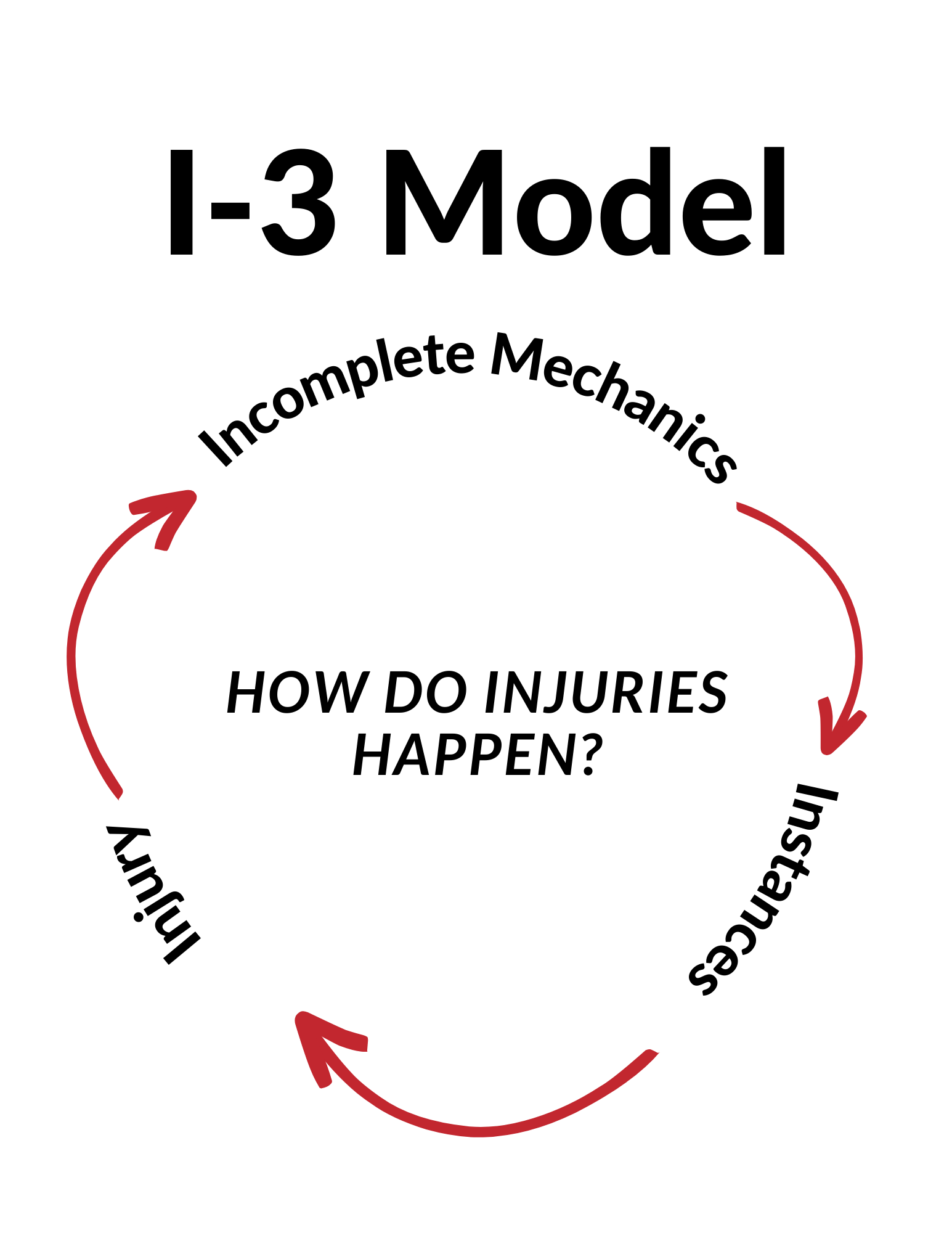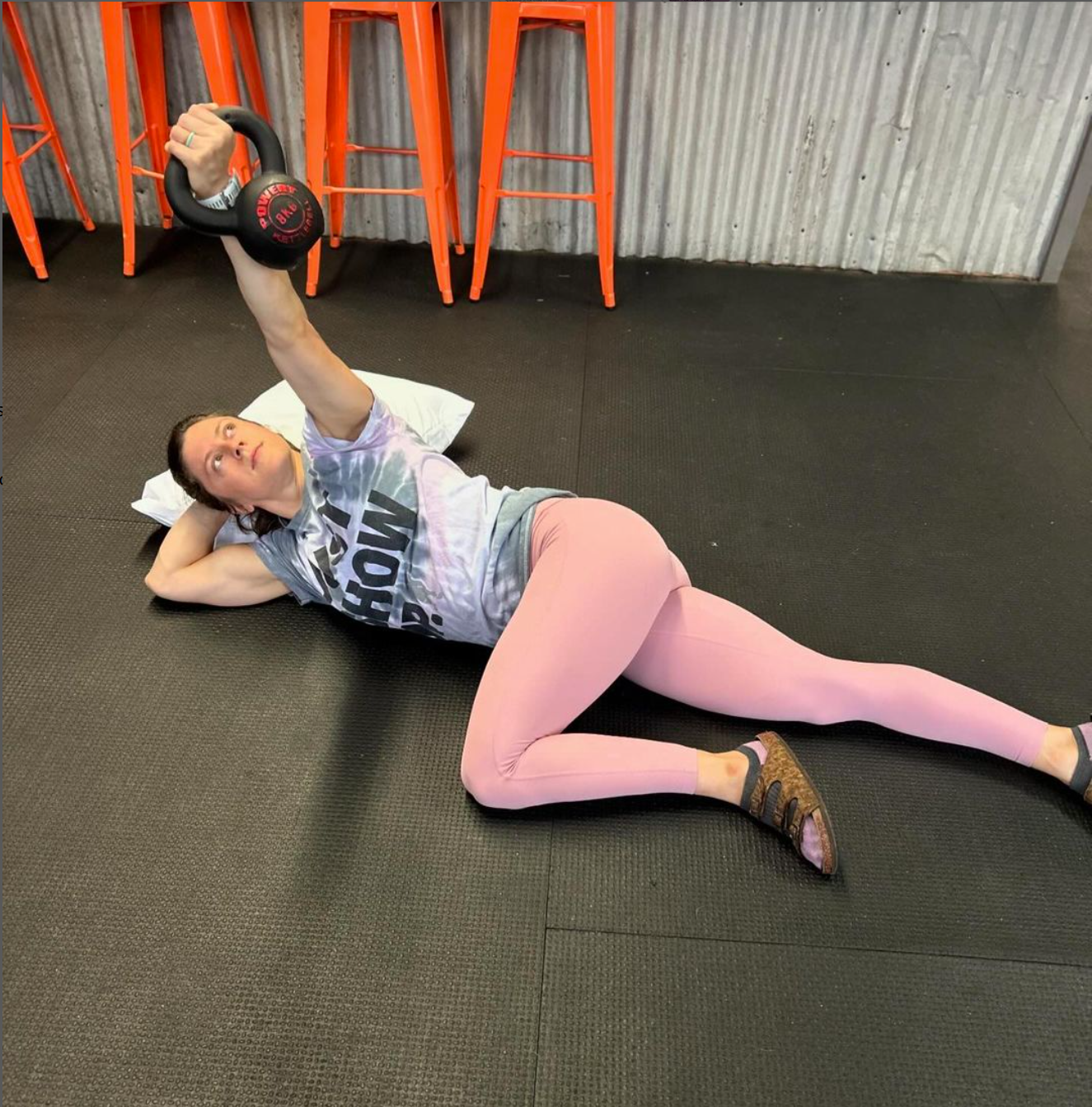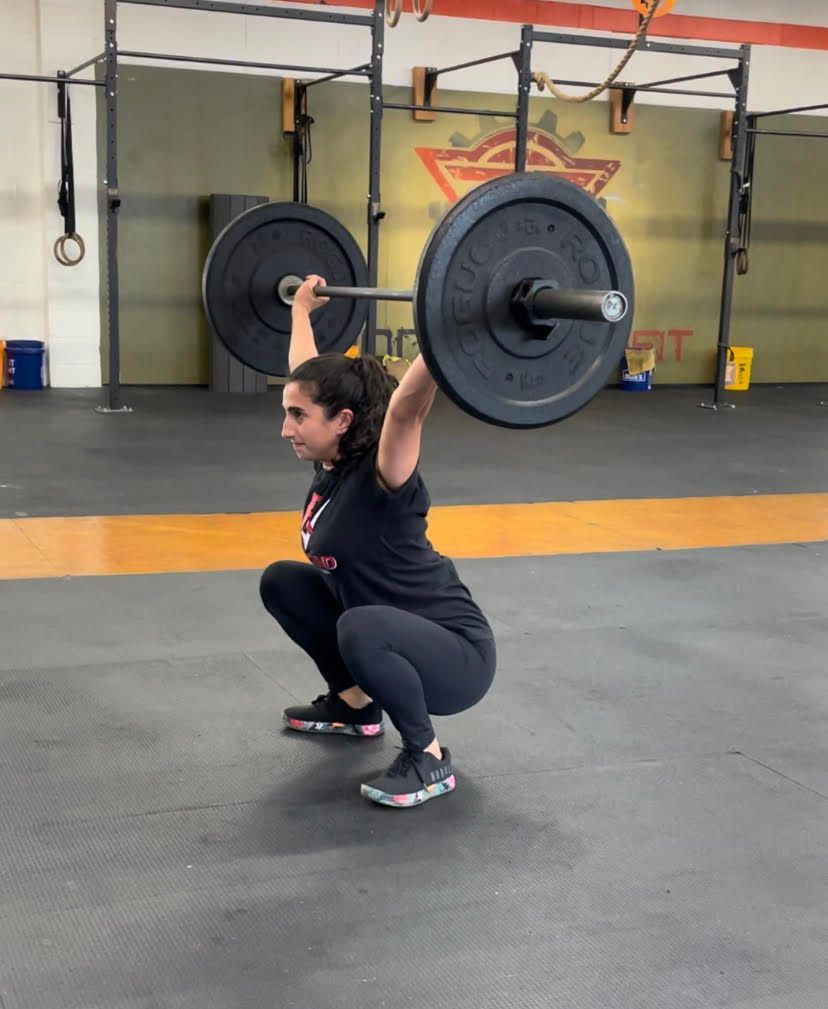The Injury Life Cycle
Let's chat about something we all want to avoid but sometimes find ourselves dealing with – injuries.
Ever wondered how that tiny twinge during your morning jog or that mild discomfort during your workout session could spiral into something more? Welcome to the world of the
I-3 model, your new best friend in understanding those pesky injuries. This is a vicious circle that if left spiraling out of control, will only continue to get worse with time if not taken care of. Let's first look at our amazing artistic skills for reference, then peek at what this really looks like.
1. Incomplete Mechanics
Alright, picture this: You’ve got a shiny new bike, but one of the gears isn't quite right. Now, it still rides, but not as smoothly as it could, right? That’s what happens with our bodies. Incomplete mechanics might pop up as limited flexibility, a bit of imbalance in strength, maybe some wobbly stability, or just not quite getting that motor control dialed in. It’s like our body’s way of riding with that wonky gear. It works, but over time, it might break down.
2. Instances of Pain
Moving on from our bike analogy – these incomplete mechanics can then lead to occasional "uh-oh" moments. You know, when you’re starting to push a bit harder in your training or going for that extra mile, and there's a slight 'ouch' or ‘hmm, that felt weird’. These are the instances of pain. They're sneaky, like those little warning signs or notifications on your phone. Not quite an emergency, but a little nudge saying, "Hey, pay attention to me!"
3. Injury
Now, if we keep swiping away those pain notifications, what happens? Yep, the bike crashes! Or in our body's case, injury strikes. That minor discomfort, when repeated, can turn into a more significant issue. And before you know it, you're benched, dropping out of a race or missing out on your favorite activities and, let's be real, feeling frustrated....again.
But here’s the kicker, your decision may go one of two ways.
Option 1: You may wait a week or two and the pain comes down! WOO HOO! However, if those incomplete mechanics are not fixed, the next time those instances and injuries pop up, they may not be as kind as the last time. Once injured, our mechanics can get even wonkier, which means a higher chance of more pain and further injuries.
It’s like our very own version of Groundhog Day, but with more ice packs and fewer laughs.
Option 2: You say, screw this pain, I'm used to dealing with it. Continuing to deal with it will only lead to further compensation around the injury (incomplete mechanics) and now you run the risk of injuring another area on your body either above or below the painful joint.
Navigating the I-3 Loop
Now that we’ve unpacked the I-3 model, what's the game plan?
Awareness is step one. Recognizing that something's off is half the battle won.
And then?
Well, addressing it head-on. Maybe it's a bit of extra stretching, some strength training, or seeking advice. It's about taking charge, recalibrating, and hopping back on that bike, gears all in perfect sync!
So, next time you're in the thick of it, pushing yourself to new heights, remember the I-3 model. Listen to your internal notifications, adjust accordingly, and keep that circle from spinning. After all, we all want more miles, more movement, and more moments where we feel on top of the world, right?
Stay healthy,
Rebound PT











